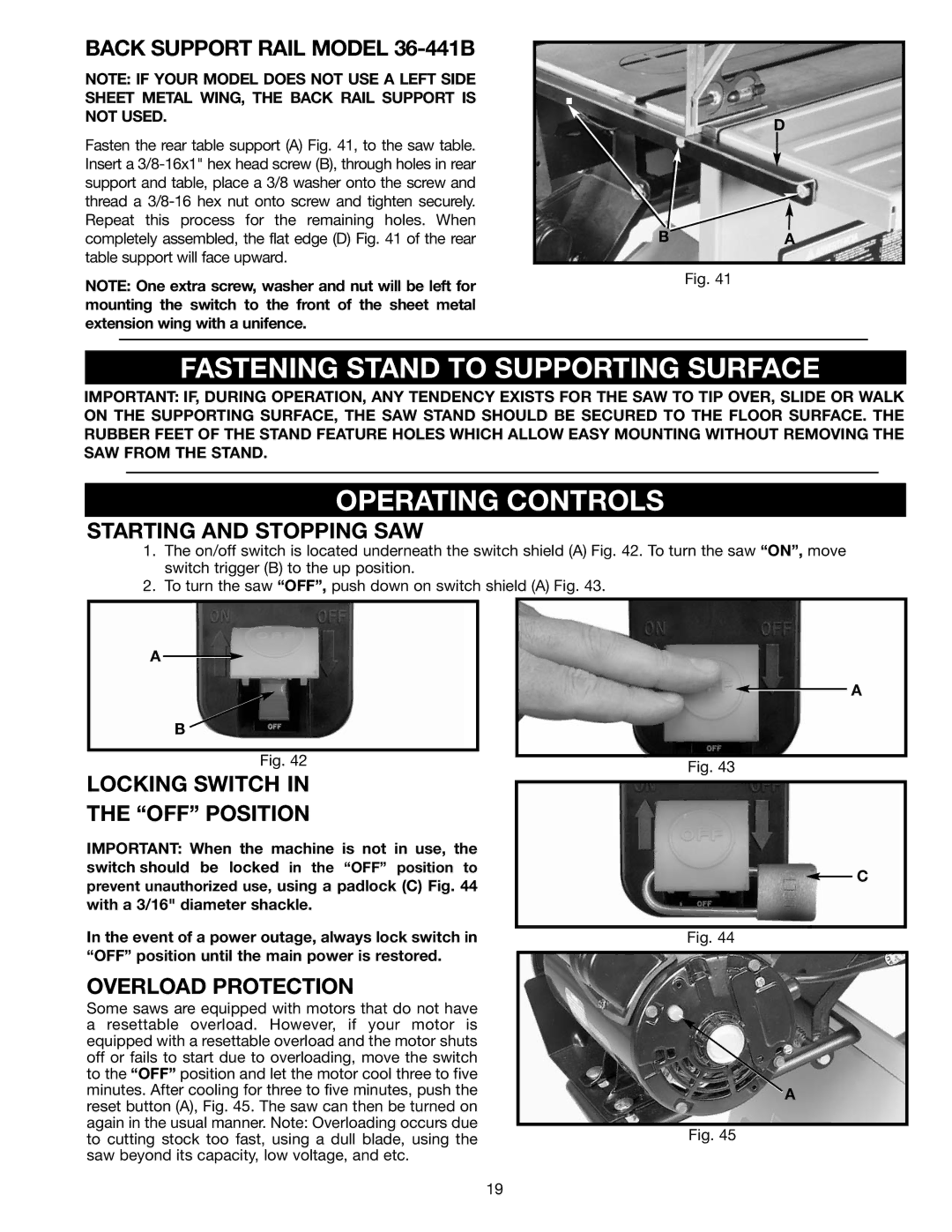
BACK SUPPORT RAIL MODEL 36-441B
NOTE: IF YOUR MODEL DOES NOT USE A LEFT SIDE SHEET METAL WING, THE BACK RAIL SUPPORT IS NOT USED.
Fasten the rear table support (A) Fig. 41, to the saw table. Insert a
NOTE: One extra screw, washer and nut will be left for mounting the switch to the front of the sheet metal extension wing with a unifence.
D
BA
Fig. 41
FASTENING STAND TO SUPPORTING SURFACE
IMPORTANT: IF, DURING OPERATION, ANY TENDENCY EXISTS FOR THE SAW TO TIP OVER, SLIDE OR WALK ON THE SUPPORTING SURFACE, THE SAW STAND SHOULD BE SECURED TO THE FLOOR SURFACE. THE RUBBER FEET OF THE STAND FEATURE HOLES WHICH ALLOW EASY MOUNTING WITHOUT REMOVING THE SAW FROM THE STAND.
OPERATING CONTROLS
STARTING AND STOPPING SAW
1.The on/off switch is located underneath the switch shield (A) Fig. 42. To turn the saw “ON”, move switch trigger (B) to the up position.
2.To turn the saw “OFF”, push down on switch shield (A) Fig. 43.
A
B
Fig. 42
LOCKING SWITCH IN
THE “OFF” POSITION
IMPORTANT: When the machine is not in use, the switch should be locked in the “OFF” position to prevent unauthorized use, using a padlock (C) Fig. 44 with a 3/16" diameter shackle.
In the event of a power outage, always lock switch in “OFF” position until the main power is restored.
OVERLOAD PROTECTION
Some saws are equipped with motors that do not have a resettable overload. However, if your motor is equipped with a resettable overload and the motor shuts off or fails to start due to overloading, move the switch to the “OFF” position and let the motor cool three to five minutes. After cooling for three to five minutes, push the reset button (A), Fig. 45. The saw can then be turned on again in the usual manner. Note: Overloading occurs due to cutting stock too fast, using a dull blade, using the saw beyond its capacity, low voltage, and etc.
A
Fig. 43
C
Fig. 44
A
Fig. 45
19
